AND....THEY"RE OFF!
What a great, fun CLAP OUT! Go get 'em, ladies! We're rooting for you You got this! Good luck at the NYSPHSAA Volleyball Championships!
A special thank you to Megan Earl Sullivan, a member of the 2000 Varsity Volleyball team ---the last time our Varsity Volleyball team went to the NYSPHSAA Championships --- who stopped by (wearing the silver medal the team won that year, btw)) to give a pep talk to the 2024 team! SO COOL!
THANK YOU to everyone who made this evening possible and who joined us! We appreciate you!


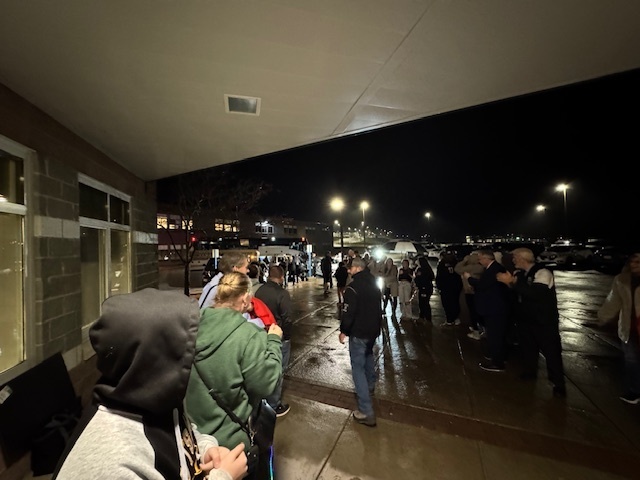
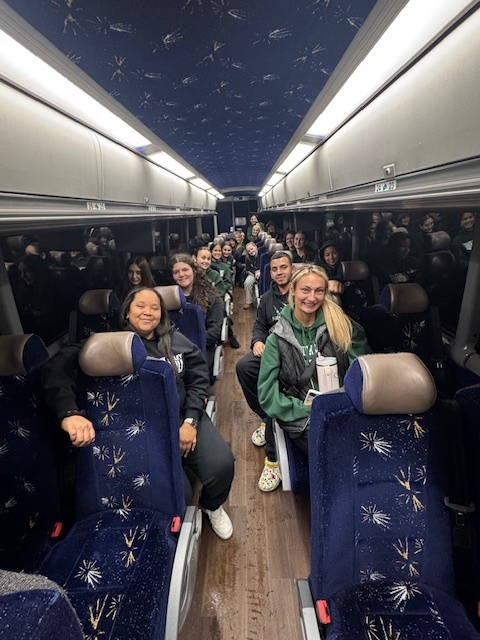
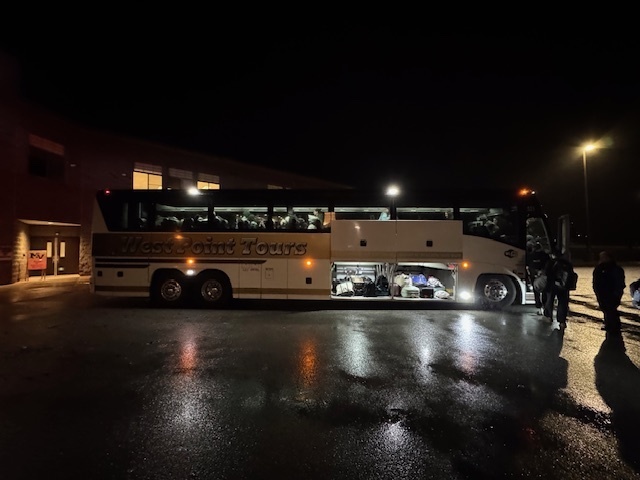
District second-graders, like Joseph Ferara’s second-graders, are learning about the concept of place value during their math lessons.
In this recent lesson, students take their knowledge of how three-digit numbers get split into hundreds, tens, and ones and apply that knowledge to learning how to manipulate these numbers.
Here, this lesson teaches them each place value can’t “exceed 9 dots,” and if it does, they have to trade those dots for the next place value. This is really an introduction into the reasoning behind addition with regrouping and teaches them how to exchange place values to create numbers in their standard form. These are important math skills to know!
When doing this, Mr. Ferara’s students use the word “transport” to show that they’re just moving the dots to a new place value, and not eliminating them all together. Think of it like cashing in 10 ones for 1 ten and 10 tens for 1 hundred.
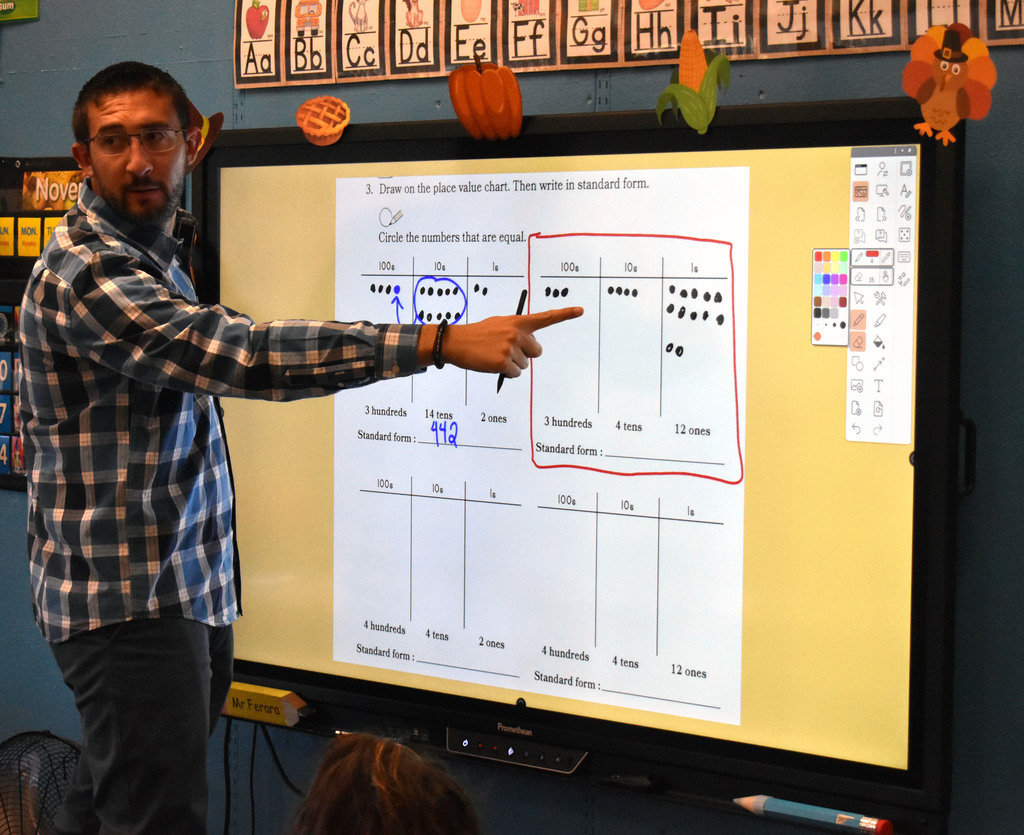
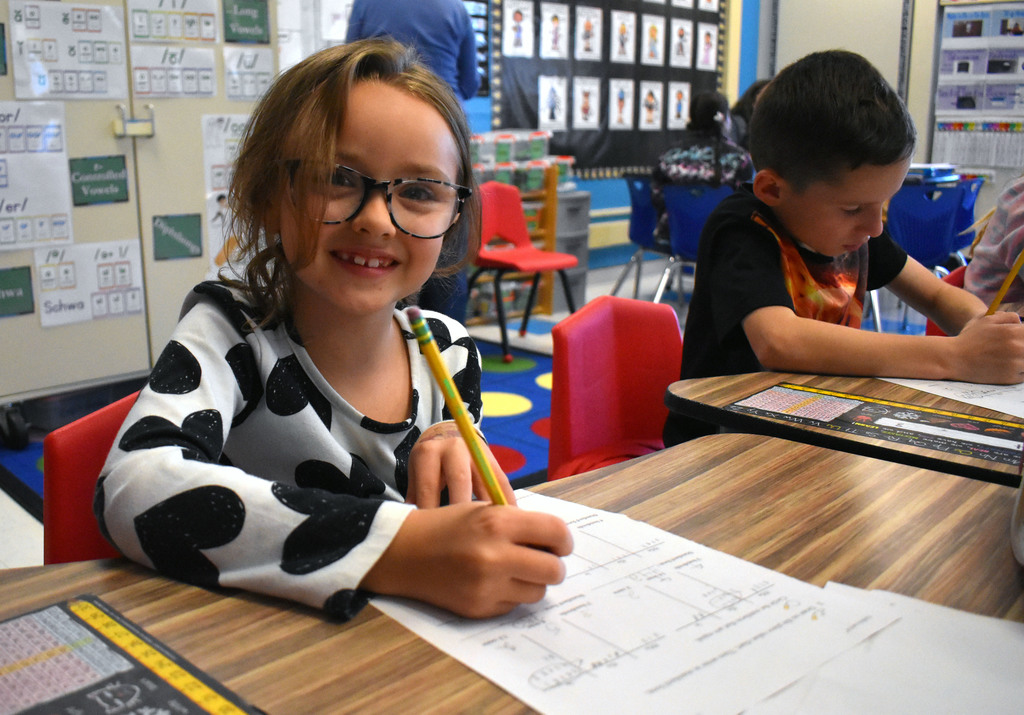


HANDS UP!
Who needs jazz hands when you have “white board hands?”
Adrianna Ciccarelli’s IS fourth-graders are using “white board hands” to quickly answer rounding questions during math review. What a fun way to do work!




Members of the Middle School’s Pet Club recently welcomed another guest speaker who shared her expertise and experience with them!
Retired vet technician Crystal Sovak, who worked in the field for 20 years, shared stories and real-life experiences with students. This also included showing students x-rays and dental images from different species!
But the real star of the gathering was Marvel, Ms. Sovak’s dog, who was a rescue dog! Marvel happily allowed Ms. Sovak to brush his teeth and trim his nails, which are both an important part of healthy pet care. It was a great opportunity for students to learn tips from a professional as well as to learn more about careers in the animal care field.




November is National Men’s Health Awareness Month! Join us and wear purple attire to help bring awareness to unique health issues of men!
Please join the efforts of the district's Buildings & Grounds team to bring awareness to important men's physical and mental health issues!
November is also "No-Shave November" and "Movember," movements created to encourage conversations about cancer awareness among men.
Call for photos: Share your student's purple attire for a forthcoming photo gallery by emailing to communications@minisink.com by 3 p.m. on Friday, Nov. 22!
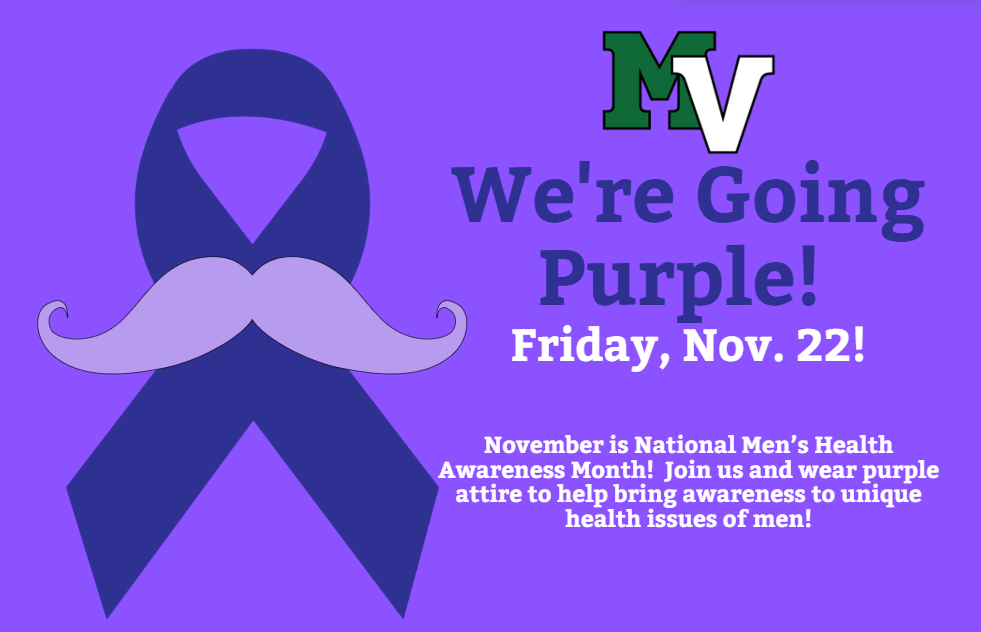
Lynda McKeon’s and Taryn Richards’ IS third-graders are getting really skilled at rounding two and three-digit numbers to the nearest 10 on a vertical number line!
During a recent lesson, students began by renaming numbers in unit form to help round to the nearest 10. This practice helps students to understand how many 10s are in the number and what the next 10 is. Then, they established the halfway mark between 10s. Students have to decide if the number is “more” than halfway or “less” than halfway. This practice helps the students round to the nearest 10 more efficiently.
This skill helps students to develop a greater foundational understanding of place value, estimation and simplifying numbers to make calculations easier in real-world situations where exact precision isn't always necessary.
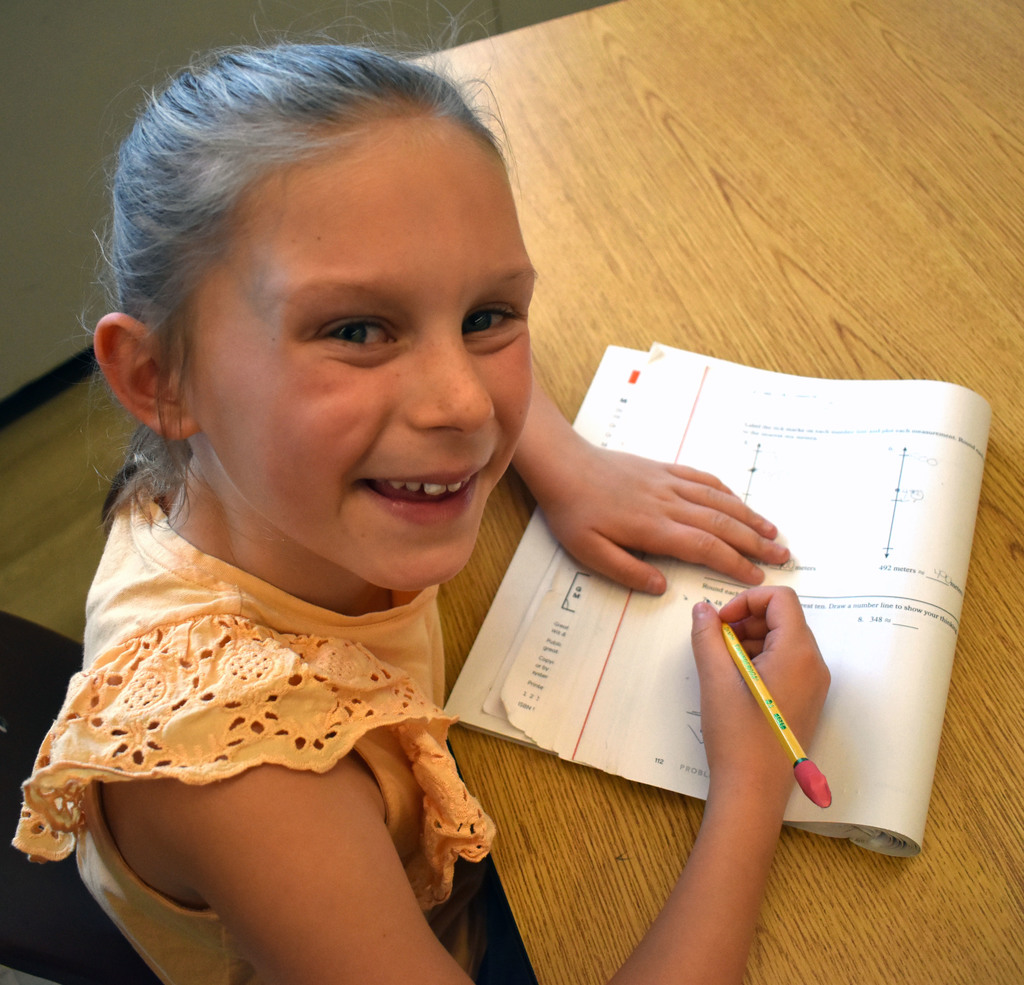



The Otisville fourth-grade teaching team of Jenna Colman/Victoria Frascone, Erica Alders/Alexa Roach, Susie Balfour and Adriana Eichwald celebrated the end of ELA Unit 2, “Empires in the Middle Ages,” with a themed medieval celebration for their students!
During this unit, students learned about castles, knights and other topics. After taking a virtual tour of a medieval castle’s Great Hall, students learned about the long tables that the nobles would gather at for meals.
Sitting at these long tables under "candlelit chandeliers," students created beautiful stained-glass windows. During the unit, students learned about "rose windows," a type of stained-glass window that looks like a flower. Students used tissue paper and laminating pockets to make their own stained-glass creations that look beautiful when the sun shines through, just like a real stained-glass window.
Students also sat by the Great Hall’s roaring "fire" and created family crests, similar to what would represent a noble family during this time. What a fun and creative way to reinforce Middle Age lessons!
Studying the Middle Ages in fourth-grade is important because it provides a foundation for understanding Western civilization and introduces key concepts like feudalism, the role of the Church, and the development of early European societies and more, which significantly shaped the world we live in today. It also allows students to explore fascinating stories and imagery from this period!






GET WINGS and support the Class of 2025!
Buffalo Wild Wings in Middletown will donate 10% of your purchase on Saturday, Nov. 23 to support Class of 2025 initiatives. Make sure you bring this ticket!

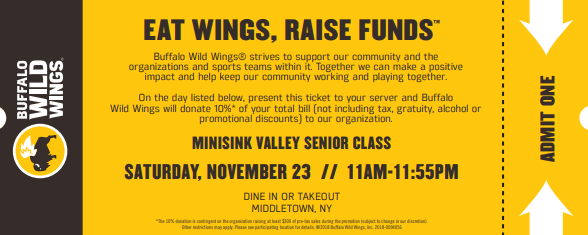
It’s a huge deal to qualify for and participate in State Competition! Please join us in congratulating Senior Ryan Capo, who represented Minisink Valley and Section IX with distinction and finished in 62nd place at this past weekend’s NYSPHSAA Cross Country Championships with a time of 16:34. As a team, Section IX finished in second place!
“We want to take a moment to celebrate his incredible achievements and dedication,” said Varsity Coach Nichole Gaucher. “This season has been a testament to his hard work, determination, and passion for the sport.”

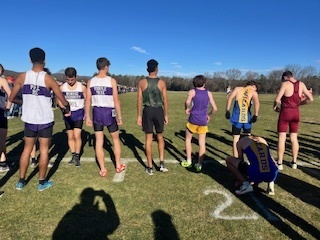
Candace Gale’s and Cecilia Kosowicz’s IS third-graders, like all district third-graders, are perfecting their plotting and labelling skills during math lessons. This is important because it teaches students how to organize and visually represent data, allowing them to analyze information, identify patterns, and draw conclusions which is a crucial skill for understanding and applying math in everyday life. Students also have the opportunity to work on their critical thinking skills by interpreting data and communicating findings effectively through graphs.

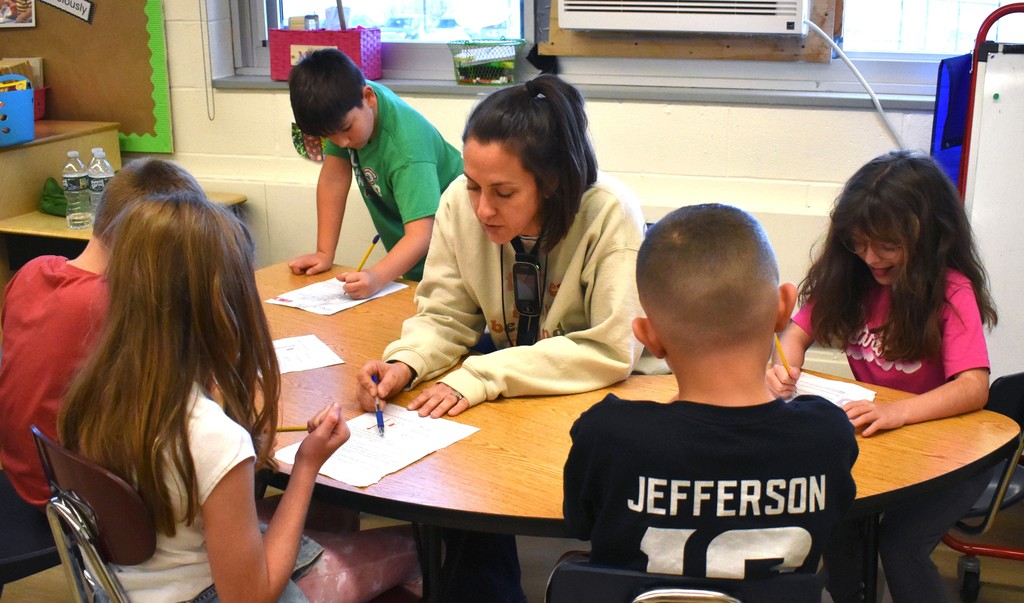



While it's not the outcome everyone hoped for, we're beyond proud of the grit and determination our Varsity Football team showed in this evening's loss to Cornwall, 27-26. The team fought until the last seconds of the game and their tenacity and resolve are examples for everyone to follow.
Please join us in congratulating the players and coaches for a great season.

Lindsey McKernan’s ES kindergarteners have been learning to group numbers by 5 using cubes! Manipulatives, like cubes, allow students to interpret, comprehend, and represent a wide variety of math concepts and can make learning fun! Later, her students used clipboards on the carpet to complete the writing portion of the lesson.
Manipulatives are physical objects that students can touch, move, and play with to help them understand abstract math concepts. They come in many shapes and sizes, and research shows that using them has a positive effect on students' understanding.



Joan Giardina’s IS fourth-grade art students are learning about the importance of scale in composition, using cat stencils! In art composition, scale refers to the relative size of an object or artwork in relation to another object or the viewer's body. It can also refer to the relationship between different parts of an image.



Congratulations to the incoming 2024-25 Otisville K-Kids officers, who recently assumed their new roles during the group’s Fall Installation, where 21 new members were inducted. New officers are Jillian O'Sullivan, president; Quinn Lattimer, vice president; Peter Caputo, treasurer; and Ariana Rodriguez, secretary.
The Otisville K-Kids Club is sponsored by Minisink Valley Kiwanis, and is a leadership program for primary/elementary school age students. Club members improve their schools and communities — an experience that helps them develop a passion to serve, a desire to lead and the ability to engage and collaborate with others.
Minisink Valley Kiwanis President Grace White and K-Kids Advisors Andrea Yager and Logan Reggio attended the ceremony to support the club, its achievements, and vision for the future.
The group’s recent projects were the Little Free Library, Treats for Troops, "Souper Seniors", raising money for Room to Read and a local animal shelter, playground signs for the playgrounds at Otisville, and cards for patients at Garnet Medical Center.
"We are looking forward to a busy year of community service,” said School Club Advisor Danielle Ulbrich.

Ian Walker’s ES second-graders, like all district second-graders, have spent ELA time reviewing “the long a sound” during phonics lessons.
The "long a sound" in second-grade phonics lessons is crucial because it reinforces a foundational reading skill, allowing students to decode words with different spellings that produce the "long a" sound (like "a" in "cake," "ai" in "rain," or the "ay" in "play") which are commonly encountered in grade-level texts, helping them to read more fluently and accurately.
As part of their review, students paired and played “Roll and Read,” a phonics/reading activity where students have a 6x5 grid with words inside each square. They roll a die based on what number they roll, and then read a word from that column. Students also read “Spelling Bee” from their Kids Excel student readers, which was also tied to the phonic skills they’re learning about in class. Partners go back and forth reading words aloud. Working with friends makes phonics lessons fun!




Take a peek at dress rehearsals for the High School Drama Club's production of 'Get Smart!"
Be smart and get tickets to 'Get Smart!'
TICKETS: https://www.onthestage.tickets/.../67093bfb963a9e7818abc70d




Lillian Preziosi’s Otisville fifth-graders have been working with their reading partners to learn about an ancient Maya myth that explains the creation of the Earth and its people. Afterward, they continued working together to answer comprehension questions about the chapter and discuss the characteristics of a myth. Kudos to them for their hard work to develop their partner reading skills and learn how to work together in order to complete activities in a productive and efficient manner.
Their reading and comprehension work focused on learning that large complex civilizations, including those of the Maya, Aztec, and Inca, developed in the Americas before the arrival of Europeans. They learned about the geography, climate, flora, and fauna of the Americas as well as the overall history and timeline highlighting the rise and fall of the Maya, Aztec, and Inca civilizations. Students also learned the innovations and discoveries of the Maya, Aztec, and Inca; and their reading unit featured myths from these ancient civilizations.



VOLLEYBALL FANS!
Finally! We're happy to share ticket information for the Nov. 16 NYSPHSAA regional volleyball matchup: Minisink Valley vs. Union- Endicott (Section IV champions) in the Class AA regional game. Game time is 5 p.m. Please note, scroll all the way down the ticket page for information.
https://gofan.co/event/2238152?schoolId=NYSPHSAAIV

Ashley Hamilton and Bridget O’Mara-Green’s eighth-grade math classes recently created their own, unique tessellations to conclude their lessons about geometric transformations.
Learning about geometric transformations in eighth-grade is important because it helps students develop spatial reasoning skills by understanding how shapes can be moved, flipped, rotated, and resized in a coordinate plane.
In math, a tessellation is a pattern created by fitting together identical geometric shapes on a plane without any gaps or overlaps, essentially forming a repeating pattern that can extend infinitely in all directions. The shapes used in tessellations are typically polygons, and they fit together perfectly, repeating in a regular or semi-regular arrangement. The key characteristic of a tessellation is that each shape is arranged in such a way that it fills the entire area, and the pattern continues indefinitely in all directions.
Geometric transformations provide a crucial foundation for further study in geometry and has practical applications in fields like art, architecture, and engineering, where understanding how objects change position and size is vital. Plus: this also enhances critical thinking and problem-solving abilities by allowing students to analyze and manipulate shapes through transformations.
Dutch graphic artist MC Escher made woodcuts, lithographs, and mezzotints, many of which were inspired by mathematics. His work features mathematical objects and operations including impossible objects, explorations of infinity, reflection, symmetry, perspective, truncated and stellated polyhedra, hyperbolic geometry, and tessellations. He produced his first piece of tessellating artwork in 1925.





Skyler Klein’s Otisville fourth-grade music students have recently learned a "round" (type of song) called "Come to the Top of the Path in the Garden." This particular song choice was a "visual round," meaning not only was the song performed in parts at different times, but each group was represented visually by a circle performing movements as they sang. Take a look!
In music, a “round” is a short, repetitive song where multiple people sing the same melody, but each person starts singing at a different time. Rounds are a great way for students to develop musical independence, to perform and listen at the same time.




